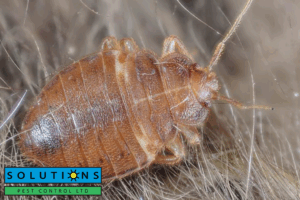When it comes to bed bug infestations, early detection is key. One of the most obvious and revealing signs of an infestation is the presence of bed bug droppings. But what do bed bug droppings look like exactly? If you’re trying to identify a possible problem in your home, understanding what to look for can help you act quickly and potentially avoid a full-blown infestation.
In this guide, we’ll cover everything you need to know about identifying bed bug droppings, where to find them, what they mean, and what steps you should take next.
Understanding Bed Bug Behavior
Before diving into their droppings, it’s helpful to understand a little bit about bed bugs themselves. These small, flat, reddish-brown insects feed on the blood of humans and animals, typically at night while people are sleeping. They’re excellent hiders, often taking refuge in mattress seams, box springs, headboards, baseboards, and even behind electrical outlets.
Since bed bugs are nocturnal and elusive, spotting them directly isn’t always easy. That’s where their droppings come into play as a vital clue.
What Do Bed Bug Droppings Look Like?
Bed bug droppings are essentially digested blood. After feeding, bed bugs excrete waste that leaves behind small, dark stains. These droppings usually appear as:
- Tiny black or dark brown dots
- Specks that resemble black ink from a marker
- Pinhead-sized stains that may smear if rubbed
Because the droppings contain blood, they are typically rust-colored or black and may bleed into fabrics, especially on porous materials like mattresses and sheets.
If you’re wondering what do bed bug droppings look like compared to other pests, know that they are much smaller and darker than rodent droppings and more consistent in shape than cockroach feces.
Where to Find Bed Bug Droppings
Finding the droppings starts with knowing where to look. Bed bugs tend to stay close to their food source humans so they’re most commonly found in and around sleeping areas. Here are the top places to inspect:
Mattress and Box Spring
Check seams, corners, and tags of mattresses and box springs. These are prime hiding and nesting spots.
Bed Frame and Headboard
Examine crevices, screw holes, and joints in the bed frame. Bed bugs often hide in small cracks and deposit droppings nearby.
Furniture
Look in cushions, seams, and folds of upholstered furniture. Bed bugs can easily move to nearby couches or chairs.
Baseboards and Wall Cracks
Any small gap or crevice around your bedroom can become a hiding place for bed bugs, and droppings may be visible on walls or behind baseboards.
Electrical Outlets and Picture Frames
These are less obvious but common nesting sites, especially in more advanced infestations.
What Do Bed Bug Droppings Indicate?
If you’ve identified bed bug droppings, it’s a strong sign of an active infestation. Unlike other pests that leave behind droppings when passing through, bed bugs tend to defecate close to their harborages meaning where you find droppings, you’re likely to find more signs of the pests themselves.
You may also notice:
- Shed skins (exoskeletons) – Bed bugs shed their skin as they grow.
- Tiny white eggs or eggshells – Oval-shaped and about 1 mm in size.
- Live bed bugs – Especially in the seams of mattresses or hiding in cracks.
Together, these clues point to a need for professional intervention. If you’re searching for bed bug control near me, acting quickly will help prevent the infestation from worsening.
Are Bed Bug Droppings Harmful?
Bed bug droppings themselves are not toxic, but they can still pose risks. For individuals with allergies or asthma, the allergens in droppings and shed skins can exacerbate symptoms. The stress and sleep disruption caused by infestations can also take a toll on mental well-being.
Furthermore, the stains left by bed bug feces can be very difficult to remove, especially from fabrics and mattresses, making early detection and treatment essential.
Why DIY Isn’t Always Enough
Many people try DIY methods to treat bed bugs once they find droppings, but bed bugs are notoriously difficult to eliminate without the right tools and knowledge. Over-the-counter treatments may kill a few bugs but rarely reach the root of the problem, especially hidden eggs or bugs inside walls and furniture.
Calling professionals who specialize in pest control West Vancouver ensures that the infestation is treated thoroughly and safely, using targeted treatments that are both effective and safe for your home and family.
Tips for Preventing Bed Bugs
While bed bugs can enter even the cleanest homes, here are a few prevention tips:
- Inspect hotel rooms when traveling. Check beds, headboards, and drawers for signs.
- Don’t bring second-hand furniture indoors without inspection.
- Wash bedding regularly and vacuum often.
- Use protective covers for mattresses and box springs.
If you’re dealing with recurrent problems, you may want to explore local exterminator West Vancouver options for long-term peace of mind.

What to Do If You Spot Bed Bug Droppings
Once you’ve confirmed the presence of bed bug droppings, here are your next steps:
- Avoid disturbing the area – Don’t move furniture or vacuum right away, as this can scatter bugs to new areas.
- Document what you see – Take photos of droppings, stains, or bugs to help pest control professionals assess the severity.
- Contact a professional – Seeking help from an expert ensures a faster and more effective resolution.
A trusted provider offering bed bug control near me will conduct a thorough inspection, recommend the right solution, and apply treatments tailored to your unique environment.
About Solutions Pest Control
Solutions Pest Control is proud to serve West Vancouver and surrounding areas with expert pest management services. Whether you’re dealing with bed bugs, rodents, ants, or wasps, our team offers tailored, eco-friendly, and effective pest control solutions to protect your home or business. We use green and safe pesticides to ensure the health of your family, pets, and the environment.
We understand how stressful pest problems can be, which is why we’re committed to responsive service, long-term prevention strategies, and complete customer satisfaction.


